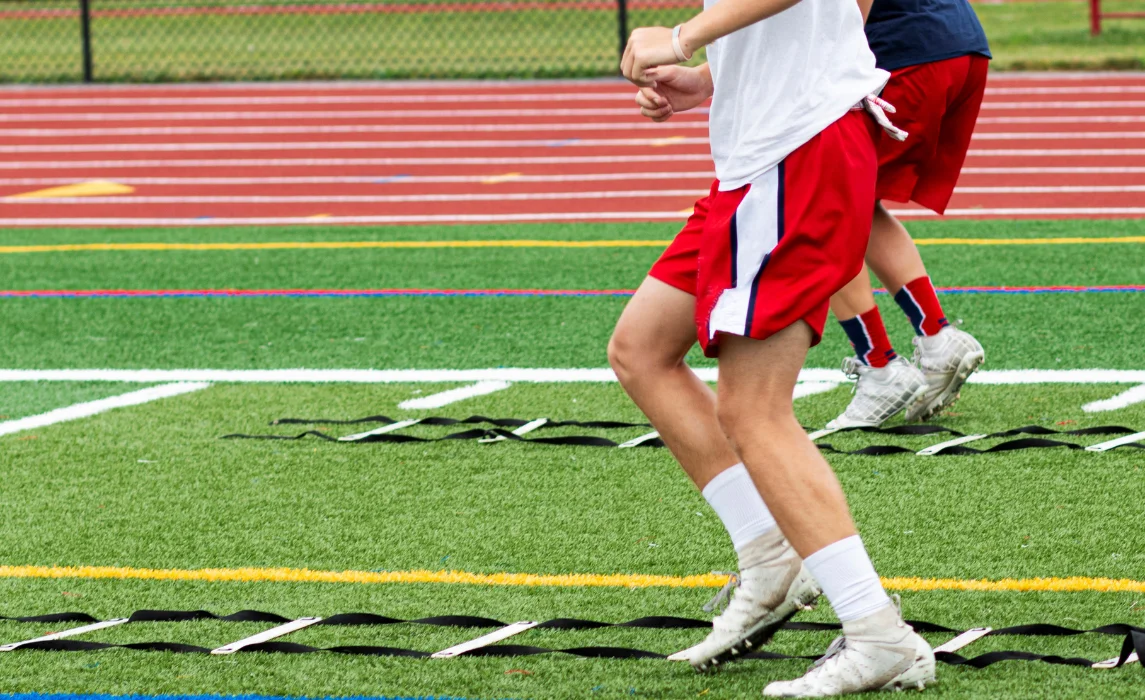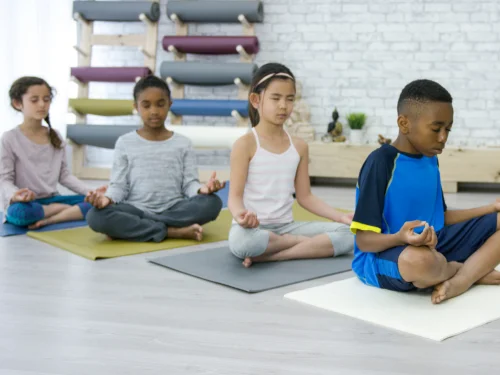Top 10 Kid Coordination Drills: Fun, Effective Ways to Build Motor Skills

Yes—finger plays, clapping games, and dance routines that use hand gestures all help. Combine rhythm and repetition for deeper learning.
Send home simple activity ideas, kits, or worksheets. Offer short instructions and encourage family involvement. Regular practice builds lasting progress.
Try origami, sticker scenes, stringing pasta, or painting with Q-tips. Crafts that use small pieces build precision and control.
Kid coordination drills help children build balance, body awareness, and motor control—all essential for daily tasks like writing, playing sports, and moving confidently. Whether at home, in school, or during therapy, these coordination activities for kids strengthen both fine and gross motor skills while keeping learning fun.
Why Coordination Drills Matter
.webp)
Coordination is more than movement—it’s the ability to perform actions smoothly, accurately, and with purpose. Strong coordination supports physical, cognitive, and emotional development.
It includes:
- Hand-eye coordination: Tracking and reacting to objects, like catching a ball.
- Foot-eye coordination: Connecting visual input with foot movements.
- Bilateral coordination: Using both sides of the body together.
- Fine motor coordination: Precise hand movements needed for writing and buttoning.
- Gross motor coordination: Larger body movements like jumping, running, and climbing.
Practicing coordination drills helps kids build independence, confidence, attention, and school-ready motor skills.
Core Categories of Kid Coordination Drills
.webp)
1. Hand-Eye Coordination Drills
These drills enhance a child's ability to process visual information and guide hand movements accurately.
Try These:
- Balloon Tap: Keep a balloon in the air using only one hand.
- Target Toss: Toss beanbags at targets of different distances.
- Clap & Catch: Toss a ball in the air, clap once (or more), and catch it.
- Bubble Burst: Pop bubbles using only index fingers for precise aiming.
2. Foot-Eye Coordination Drills
Essential for sports and playground activities, these drills help children connect what they see with foot movement.
Try These:
- Stationary Ball Kick: Start with kicking a still ball into a goal.
- Obstacle Foot Tap: Tap cones or soft markers with alternating feet.
- Drop Kick Game: Drop a balloon or soft ball and kick it before it lands.
- Balance and Kick: Stand on one foot while gently kicking a ball with the other.
3. Bilateral Coordination Drills
Drills that engage both sides of the body help with rhythm, balance, and symmetrical movement.
Try These:
- March & Clap: March in place while clapping overhead.
- Cross-Crawls: Touch right elbow to left knee, then switch sides.
- Wheelbarrow Walks: One partner holds the child’s legs while the child walks on hands.
- Mirror Moves: One child moves while the other mimics as a reflection.
Fun Gross Motor Coordination Drills
.webp)
Gross motor drills involve big movements that challenge strength and control.
- Hopscotch with Actions: Add actions to each square (hop, spin, balance).
- Animal Walks: Bear crawls, crab walks, or frog jumps across a room.
- Balance Beam Walk: Use tape on the floor or a low beam to practice walking heel-to-toe.
- Simon Says with Movement: Integrate commands like “hop on one foot” or “touch your toes.”
Creative Fine Motor Coordination Drills
.webp)
Fine motor skills are key for writing, drawing, and everyday tasks.
- Stringing Beads: Use pipe cleaners and large beads for beginners.
- Scissor Cutting Races: Cut along curved or zigzag paths on paper.
- Finger Push-Ups: Press fingertips together and release slowly.
- Copy the Shape: Draw shapes or lines and have the child replicate them.
Incorporating Play: Making Drills Fun
The best way to build coordination? Through play! These engaging activities promote motor development while keeping kids entertained:
- Balloon Volleyball: Teams must keep the balloon off the ground.
- Twister: Encourages body awareness and asymmetrical movement.
- Dance Freeze: Dance to music, then freeze in a pose when the music stops.
- Scavenger Crawl: Search for items while crawling through tunnels or over pillows.
The Role of Core Strength in Coordination

A strong core supports posture, balance, and control.
Core-Boosting Drills:
- Plank Challenges: Hold a plank for increasing lengths of time.
- Bridging: Lift hips from a lying position and hold.
- Yoga Poses: Try Tree Pose or Downward Dog.
- Balance Games: Stand on one leg while passing an object between hands.
How to Adapt Coordination Drills for All Abilities
.webp)
Every child develops at their own pace, and some may need extra support. Here’s how to make coordination drills inclusive:
- Simplify the movement: Break down complex actions into smaller steps.
- Use larger, slower-moving objects: Balloons or scarves help kids succeed.
- Add visual prompts: Arrows or footprints to guide movement.
- Make it cooperative: Turn drills into team games to reduce pressure.
- Incorporate music or rhythm: Songs or beats can aid timing and engagement.
Therapeutic Value: Kids with Special Needs
Coordination drills are especially valuable for children with autism, ADHD, developmental delays, or motor challenges. Therapists often use structured coordination activities to:
- Strengthen motor planning
- Support sensory integration
- Boost attention span
- Increase independence
Customizing drills based on the child’s needs—and celebrating small wins—goes a long way in encouraging progress.
You May Also Like: 8 Social Skills for Kids: Building Strong Connections from the Start
Top 10 Kid Coordination Drills to Try Today
.webp)
You May Also Like: 5 Major Benefits of Hand-Eye Coordination: Why This Skill Matters More Than You Think
Final Thoughts: Practice Through Play
Coordination skills are best built not through drills alone, but through joyful movement. Whether it's throwing a ball in the backyard, dancing in the living room, or building obstacle courses indoors, every bit of play contributes to a child’s ability to move with confidence and control.
The secret? Make it fun, consistent, and age-appropriate—and don’t forget to celebrate progress, big or small.
You May Also Like: 8 Powerful Benefits of Writing: Why Putting Pen to Paper Still Matters—Especially for Kids
Kid Coordination Drill FAQ
1. What are the best coordination drills for kids?
Balloon tap, hopscotch, cross-crawls, bead stringing, and balance beam walking are among the most effective.
2. How can I improve my child’s hand-eye coordination at home?
Use balloon games, beanbag tosses, bubble popping, or simple catching practice.
3. What coordination activities are good for preschoolers?
Animal walks, dance freeze, simple kicking games, and bead threading are ideal.
4. How often should kids practice coordination drills?
Short sessions 3–5 times per week are enough to see improvement.
5. What are good indoor coordination drills for kids?
Twister, scavenger crawls, yoga poses, and mirror moves work well indoors.
6. How do coordination drills support school readiness?
They improve handwriting, attention, sitting posture, and classroom motor tasks.
7. Can coordination drills help kids with ADHD?
Yes—structured movement improves focus, body awareness, and self-regulation.
8. What coordination games can I do with no equipment?
Cross-crawls, marching, freeze dance, and Simon Says require nothing but space.
9. How do I make coordination drills fun for kids?
Turn them into challenges, games, or races; add music; and rotate activities often.
10. Do coordination drills help with sports skills?
Absolutely. Improved balance, timing, and motor control translate directly to better performance in soccer, basketball, biking, and more.




